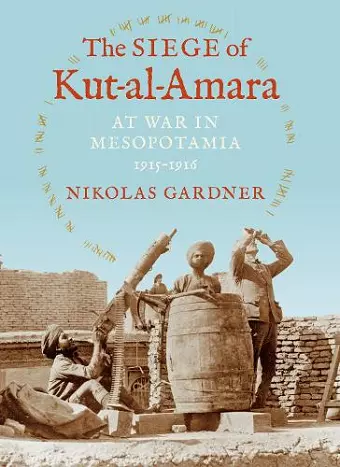The Siege of Kut-al-Amara
At War in Mesopotamia, 1915-1916
Format:Hardback
Publisher:Indiana University Press
Published:16th Sep '14
Currently unavailable, and unfortunately no date known when it will be back

Kut-al-Amara was the site of one of the longest sieges ever endured by British forces. On December 3, 1915, the 6th Indian Division under Charles Townshend sought refuge from pursuing Turkish forces inside the walled town. With no heavy artillery to destroy fortifications, the Turks circled the town, subjecting it to intermittent shelling, small arms fire, and infantry attacks. British relief units made repeated attempts to break through the Turkish lines. Meanwhile, within Kut-al-Amara a different sort of war was going on. Townshend's division was made up of Muslim sepoys, who had misgivings about fighting the Turks. Not only were the Turks fellow Muslims but they served the Ottoman Sultan, recognized by many as the Caliph, the spiritual and temporal head of Islam. The Turks played upon this potentially divided loyalty with a propaganda campaign intended to encourage desertion. Then, when a shortage of food forced the garrison to supplement its rations with horsemeat, Muslim and Hindu soldiers were faced with violating dietary restrictions in order to survive. For British officers, prolonging the defense of Kut was complicated by the need to combat disaffection and starvation among the Indian rank and file. A significant event in the British campaign in Mesopotamia, the Siege of Kut-al-Amara offers important insights into Britain's imperial army and its role in the Middle East during World War I.
The author's balanced presentation of Townshend as the architect of his own failure rests on a persuasive analysis of the ill effects on tactical operations of entrenched prejudices about the abilities of non-western soldiers. Nikolas Gardner has filled an unexplored niche in the literature on the British campaigns in Mesopotamia. The Siege of Kut-al-Amara will appeal to general readers as well as scholars interested in this remote theater of the First World War.
* Michigan War Studies Review *Rooted in archival research and narrated with panache, The Siege of Kut-al-Amara fills a gap in the burgeoning literature not only on the Mesopotamia campaign during the First World War but also on the experience of warfare in the extra-European campaigns more generally.
* Islam and Christian-Muslim Relations *Gardner has produced a bold and thought-provoking operational study, which is to be commended for presenting its argument in a clear and concise fashion. The Siege of Kut-al-Amara will prove a useful starting point for students and scholars wishing to explore the first half of Britain's campaing in Mesopotamia and raises challenging questions about the difficulties of battlefield command, even if some of the strategic avenues are left unexplored.
* Journal of the Society for Army Historical Research *"This book would make for an excellent case study in any military history lecture or seminar. Gardner provides a clear and concise guide of the key is- sues of the Mesopotamian campaign and the historiography around Townshend and military failure."
* H-Net RevieISBN: 9780253013842
Dimensions: unknown
Weight: 458g
224 pages